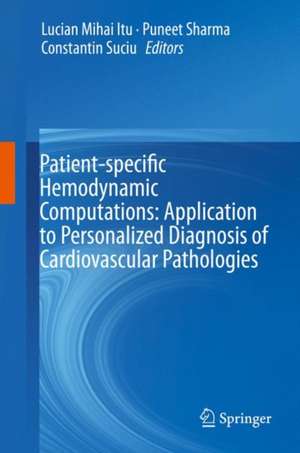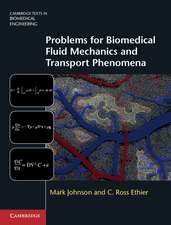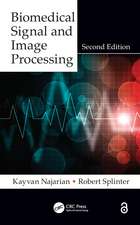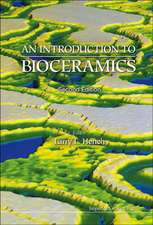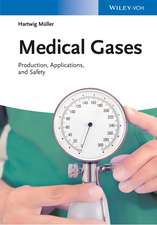Patient-specific Hemodynamic Computations: Application to Personalized Diagnosis of Cardiovascular Pathologies
Editat de Lucian Mihai Itu, Puneet Sharma, Constantin Suciuen Limba Engleză Hardback – 14 iun 2017
The book is written for scientists in the field of biomedical engineering focusing on the cardiovascular system, as well as for research-oriented physicians in cardiology and industrial players in the field of healthcare technologies.
| Toate formatele și edițiile | Preț | Express |
|---|---|---|
| Paperback (1) | 974.10 lei 39-44 zile | |
| Springer International Publishing – 11 aug 2018 | 974.10 lei 39-44 zile | |
| Hardback (1) | 1099.56 lei 3-5 săpt. | |
| Springer International Publishing – 14 iun 2017 | 1099.56 lei 3-5 săpt. |
Preț: 1099.56 lei
Preț vechi: 1157.44 lei
-5% Nou
Puncte Express: 1649
Preț estimativ în valută:
210.45€ • 218.88$ • 176.36£
210.45€ • 218.88$ • 176.36£
Carte disponibilă
Livrare economică 20 februarie-06 martie
Preluare comenzi: 021 569.72.76
Specificații
ISBN-13: 9783319568522
ISBN-10: 3319568523
Pagini: 227
Ilustrații: X, 227 p. 103 illus., 80 illus. in color.
Dimensiuni: 155 x 235 mm
Greutate: 0.55 kg
Ediția:1st ed. 2017
Editura: Springer International Publishing
Colecția Springer
Locul publicării:Cham, Switzerland
ISBN-10: 3319568523
Pagini: 227
Ilustrații: X, 227 p. 103 illus., 80 illus. in color.
Dimensiuni: 155 x 235 mm
Greutate: 0.55 kg
Ediția:1st ed. 2017
Editura: Springer International Publishing
Colecția Springer
Locul publicării:Cham, Switzerland
Cuprins
1.Computational Modeling of the Human Cardiovascular System.- 2.The Cardiovascular System and the Coronary Circulation.- 3.Patient-Specific Modeling of the Coronary Circulation.- 4.A Parameter Estimation Framework for Patient-specific Assessment of Aortic Coarctation.- 5.Lumped Parameter Whole Body Circulation Modelling.- 6.Three Dimensional Reconstruction and Hemodynamic Information Extraction from Monoplane Angiography.- 7.GPU-based High Performance Computing: Employing massively parallel processors for speeding-up compute intensive algorithms.
Notă biografică
Lucian Mihai Itu is lecturer at the Transilvania University of Braşov, Romania. He also serves as research engineer at Siemens SRL, Romania. He received the Dipl.-Eng. degree in Systems Engineering from the Transilvania University of Brasov in 2009 and the PhD degree in Systems Engineering in 2013 after having collaborated with Siemens Corporate Research during the doctoral studies. His research interests are: computational fluid dynamics, modeling of the cardiovascular system, parameter estimation methods, high performance computing, and artificial intelligence with focus on machine learning. He has published more than 50 technical and papers in various international journals and conferences. He is joint author of more than 20 international patent applications.Constantin Suciu is head of a Siemens R&D department in Romania and Associate Professor at the Transilvania University of Brasov. He received the Dipl.-Eng. Degree in Electrical Engineering in 1994, the M.Sc. degree in Electrical and Computer Engineering in 1995, both from the Transilvania University of Brasov, and the Ph.D. degree in Electronics and Computer Engineering in 2000 from the Nottingham Trent University, UK. He has an experience of over 20 years in various Industry or EU / National funded R&D projects. He is author / co-author of more than 60 scientific publications in international conferences and journals, as well as of 5 books. His current research interests are focused on the areas of Distributed and Parallel Processing and Artificial Intelligence.
Puneet Sharma is currently a Senior Director, Medical Imaging Technologies at Siemens Healthcare, located at Princeton, NJ. He received Ph.D. in Systems Engineering from University of Illinois at Urbana Champaign in 2008 and B.Tech in Mechanical Engineering from Indian Institute of Technology, Bombay in 2001. He has held various R&D positions within Siemens since 2008, focusing on the development and translation of innovative technologies into products that support the clinicians in delivering optimal care. Dr. Sharma has managed the development and commercialization of machine learning technology in clinical software applications for cardiovascular quantification of medical images. He has participated in research collaborations with several leading academic hospitals and universities, and has coauthored more than 35 peer-reviewed publications, holds 14 US and international patents, and more than 30 patents applications under review.
Puneet Sharma is currently a Senior Director, Medical Imaging Technologies at Siemens Healthcare, located at Princeton, NJ. He received Ph.D. in Systems Engineering from University of Illinois at Urbana Champaign in 2008 and B.Tech in Mechanical Engineering from Indian Institute of Technology, Bombay in 2001. He has held various R&D positions within Siemens since 2008, focusing on the development and translation of innovative technologies into products that support the clinicians in delivering optimal care. Dr. Sharma has managed the development and commercialization of machine learning technology in clinical software applications for cardiovascular quantification of medical images. He has participated in research collaborations with several leading academic hospitals and universities, and has coauthored more than 35 peer-reviewed publications, holds 14 US and international patents, and more than 30 patents applications under review.
Textul de pe ultima copertă
Hemodynamic computations represent a state-of-the-art approach for patient-specific assessment of cardiovascular pathologies. The book presents the development of reduced-order multiscale hemodynamic models for coronary artery disease, aortic coarctation and whole body circulation, which can be applied in routine clinical settings for personalized diagnosis. Specific parameter estimation frameworks are introduced for calibrating the parameters of the models and high performance computing solutions are employed to reduce their execution time. The personalized computational models are validated against patient-specific measurements.
The book is written for scientists in the field of biomedical engineering focusing on the cardiovascular system, as well as for research-oriented physicians in cardiology and industrial players in the field of healthcare technologies.
Caracteristici
Provides knowledge on the personalization of hemodynamic computations in cardiac diseases
Presents innovative results of interest to researchers, clinicians and industrial players alike
Shows high performance computing solutions, suitable for routine clinical workflows
Presents innovative results of interest to researchers, clinicians and industrial players alike
Shows high performance computing solutions, suitable for routine clinical workflows
